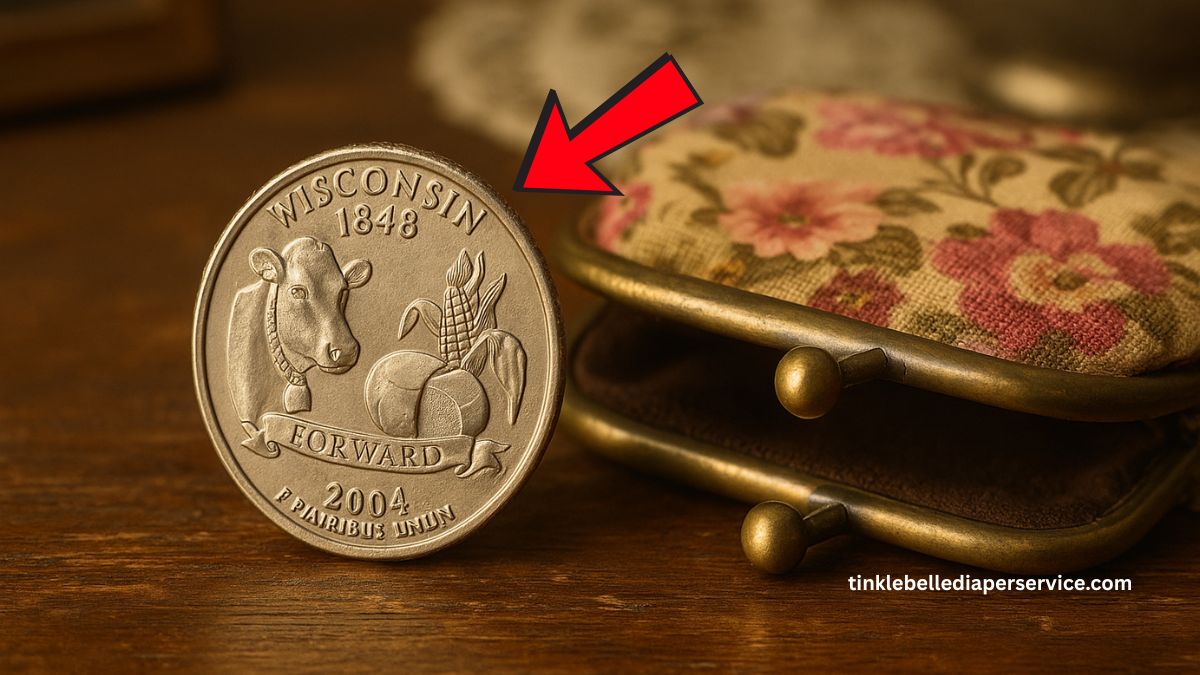In an unexpected turn of events, a rare 2004 Wisconsin State Quarter featuring a High Leaf error was discovered in a grandmother’s purse and later sold for an astonishing $43,000.
This remarkable find has reignited interest among coin collectors and enthusiasts, highlighting the potential value hidden in everyday pocket change.
The 2004 Wisconsin Quarter and Its Unique Error
The 2004 Wisconsin State Quarter was part of the U.S. Mint’s 50 State Quarters Program, which ran from 1999 to 2008. The reverse side of the coin showcases imagery significant to Wisconsin’s agricultural heritage: a cow, a wheel of cheese, and an ear of corn.
However, some of these quarters, specifically those minted in Denver (marked with a “D”), exhibit a peculiar anomaly known as the “Extra Leaf” error.
This error manifests as an additional leaf on the left side of the corn husk, which was not part of the original design.
Types of Extra Leaf Errors
There are two recognized variations of this error:
- High Leaf: The extra leaf appears above the primary leaf on the corn husk.
- Low Leaf: The extra leaf is situated below the primary leaf.
These errors are believed to have resulted from accidental die gouges during the minting process, although some speculate they may have been intentional alterations by a mint employee .
The $43,000 Discovery
The coin that fetched $43,000 was a 2004-D Wisconsin State Quarter with the High Leaf error. Its discovery in a grandmother’s purse underscores the possibility that valuable coins can still be found in everyday circulation.
The coin’s exceptional condition and rarity contributed to its high auction price, making it one of the most valuable quarters ever sold.
Value and Rarity of Extra Leaf Quarters
The value of these error quarters varies based on their condition and the specific error type. Here’s a breakdown:
| Error Type | Estimated Value Range |
|---|---|
| High Leaf | $50 – $200+ |
| Low Leaf | $20 – $50+ |
| Exceptional Specimens | Up to $6,000 or more |
Notably, a 2004-D Wisconsin quarter with a High Leaf error sold for $2,530 in 2006, and another with a Low Leaf error fetched $6,000 in 2020 .
How to Identify an Extra Leaf Error
To determine if you possess one of these rare quarters:
- Check the Mint Mark: Look for a “D” indicating it was minted in Denver.
- Examine the Corn Husk: On the reverse side, inspect the left side of the corn husk for an extra leaf.
- If the extra leaf is above the main leaf, it’s a High Leaf error.
- If it’s below, it’s a Low Leaf error.
Using a magnifying glass can aid in identifying these subtle differences.
Tips for Collectors
- Inspect Your Change: Regularly check your pocket change and coin jars for 2004 Wisconsin quarters.
- Handle with Care: If you suspect you have an error coin, handle it carefully to preserve its condition.
- Seek Professional Appraisal: Consult with a reputable coin dealer or grading service to assess the coin’s authenticity and value.
The discovery and subsequent sale of a 2004-D Wisconsin State Quarter with a High Leaf error for $43,000 serve as a compelling reminder of the hidden treasures that may reside in our everyday lives.
Whether you’re a seasoned collector or a curious novice, it’s worth taking a closer look at your coins—you might just find a valuable gem.
FAQs
What causes the Extra Leaf error on the 2004 Wisconsin quarter?
The Extra Leaf error is believed to result from accidental die gouges during the minting process, leading to the appearance of an additional leaf on the corn husk.
Are all 2004 Wisconsin quarters with a “D” mint mark valuable?
Not all 2004-D Wisconsin quarters are valuable. Only those exhibiting the Extra Leaf error—either High Leaf or Low Leaf—hold significant value to collectors.
How can I get my coin appraised?
You can consult with a professional coin dealer or submit your coin to a reputable grading service like the Professional Coin Grading Service (PCGS) for authentication and valuation.
